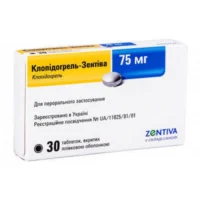Description
Fraxiparin Solution for Injections Syringe 0.6 ml. №10
Ingredients:
Fraxiparin contains enoxaparin sodium, which is a low molecular weight heparin.
Mechanism of Action:
Fraxiparin exerts its pharmacological effects by enhancing the inhibition of factor Xa and thrombin, key enzymes in the coagulation cascade. This leads to the prevention of blood clot formation and reduces the risk of thromboembolic events.
Pharmacological Properties:
Fraxiparin, with enoxaparin as the active ingredient, acts as a low molecular weight heparin that specifically inhibits factor Xa and thrombin, thereby exerting anticoagulant effects.
Indications for Use:
- Prevention of deep vein thrombosis (DVT) in patients undergoing surgery
- Treatment of DVT and pulmonary embolism
Contraindications:
Fraxiparin is contraindicated in patients with:
- History of heparin-induced thrombocytopenia
- Active major bleeding
- Hypersensitivity to enoxaparin or heparin
Side Effects:
Common side effects of Fraxiparin may include bruising at the injection site, bleeding, and thrombocytopenia. Patients should be monitored for signs of these side effects.
Usage Instructions:
Administration: Fraxiparin is administered subcutaneously in the abdomen, alternating sides. Do not expel the air bubble from the syringe before injection.
Dosage: The recommended dosage is determined based on the patient’s weight, medical condition, and indication for use.
Benefits Compared to Analogues:
The efficacy of enoxaparin in preventing and treating thromboembolic disorders has been well-documented. Clinical trials have shown similar efficacy of enoxaparin compared to other anticoagulants in preventing deep vein thrombosis postoperatively. The convenience of a pre-filled syringe like Fraxiparin can enhance patient compliance and dosing accuracy.
Suitable Patient Groups:
Fraxiparin is suitable for use in various patient groups, including adults, elderly individuals, and children (under appropriate medical supervision).
Storage Conditions and Shelf Life:
Store Fraxiparin as per the instructions provided on the packaging. Ensure proper storage conditions to maintain the efficacy of the product. Check the expiration date before use.
Packaging Description:
Fraxiparin is available in syringes containing 0.6 ml of solution for injections. Each package contains 10 syringes.
Scientific Evidence:
Studies have demonstrated the efficacy of enoxaparin, the active ingredient in Fraxiparin, in preventing and treating thromboembolic disorders. Research published in the New England Journal of Medicine highlighted the effectiveness of enoxaparin in reducing the risk of venous thromboembolism in surgical patients.
Additional Information:
Regular monitoring of platelet counts is essential during Fraxiparin treatment to detect any signs of thrombocytopenia. Patients should inform healthcare providers about any concurrent medications to avoid potential drug interactions.





